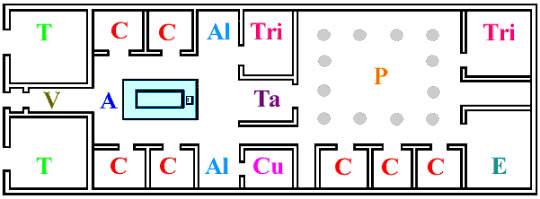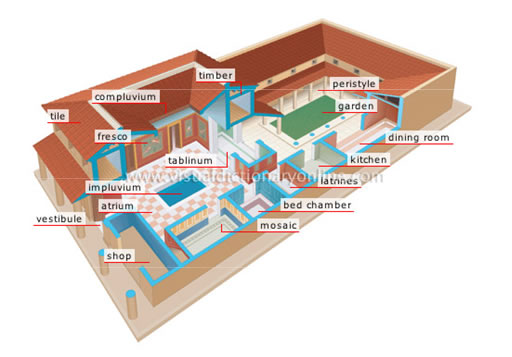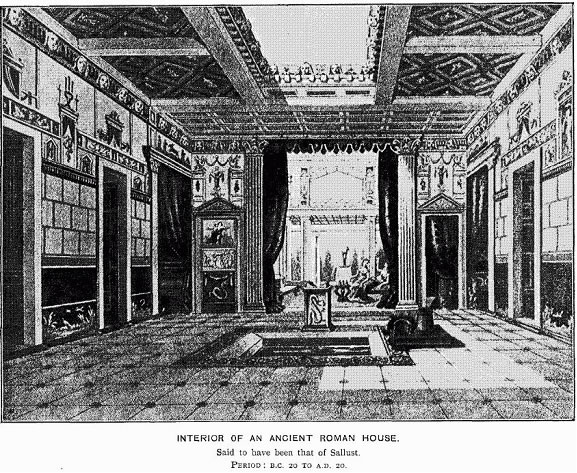First Corinthians 11:17-23
In
1 Corinthians 10:17 Paul told the Corinthians they all eat of the one loaf and
together they form the one body of Jesus.
Here
Paul returns to this idea as foundational for properly celebrating the Lordís supper.
Instead
the Corinthians have divided themselves along social
lines thus allowing the unity of the body of Christ to be destroyed by temporal
social standing.
Other
ideas used to explain the problem that Paul is addressing here are:
- The purpose of the Lordís
Supper was being violated by allowing it to become a common, daily type of
meal.
- An early form of Gnostics
who considered the physical world to be evil applied this doctrine to the
Lordís Supper and rejected the concept of the bread representing Jesusí
body.
- The super spiritual believers
who have been a problem in areas such as marriage, women in the church and
spiritual gifts had super charged the bread and the cup into having
spiritual or magical powers.† This
led these super spiritual believers to spend most of the meal in an
individual state of spiritual isolation.
- But, the best
explanation of what is going on here is still the believers who have
wealth are being inconsiderate and acting independently of those with less
worldly wealth and standing.
The ancient world, including Corinth, was familiar with cult meals that honored a god.
It is likely that the Lord’s Supper was to carry the meaning of the Last Supper in the Upper Room to each new church but was culturally similar to the cultic meals the people were accustomed to.
The Corinthians had continued to practice the meal but lost the meaning and purpose of the bread and the cup.
Our modern churches continue the bread and the cup but have lost the practice of the meal itself.
Breakdown of 11:17-34:
- 17-22 the rich are abusing the poor
- 23-26 the original words of Jesus with emphasis on “remembrance” of him are restated by Paul
- 27-32 the Paul reminds them to remember Jesus and recognize the bread and cup.
- 33-34 Paul returns to saying they should receive each other which is the recognition of the unity of the church, which is another form of the body of Christ along with the bread.
One of the themes of these sections is the abuse of the “body of Christ” which is abuse of Christ himself:
- In 17-22 the church members themselves, which is the body of Christ, where being divided and neglected.
- In 27-32 the “bread”, which is used to remember the physical body of Christ, was not correctly being discerned.
- Ultimately these verses are about the Corinthians abusing or incorrectly discerning Christ himself when they mistreat the church and the bread.
The purpose of the Lord’s Supper was to eat together with other members of the body of Christ in unity while they focused on the historical work of Jesus on the cross in his body. The work of Christ has brought these believers life and the hope of hope of his eschatological return.
The Meal in Corinth
- The church would gather in a home. This home would most likely be the home of a wealthy person since it would provide the space and the provisions.
- The dining room, called the triclinium, averaged to be about 36 square feet or about 18 feet x 18 feet. If they reclined around the three sided table called a triclinium there would be room for about 9-12 people in this room.
- Another room that would have been used in a situation called the atrium. The Atrium was a larger room similar to a courtyard in the house and was used as an entry way. This usually held about 30-50 people.
Look
at samples of each room at this site:
http://gbgm-umc.org/umw/corinthians/house.stm

Sample Plan of a Roman
House plan of Domus
A ††††††† atrium
†††††††††††††formal entrance
hall
Al ††††††† ala ††††††††††††††† "wings"
opening from atrium
C ††††††† cubiculum ††††††small room; bedroom
Cu ††††† culina
†††††††††††† kitchen
E ††††††† exedra ††††††††††††garden room
P ††††††† peristylium
†††† colonnaded garden
T †††††††† taberna ††††††††† shop
Ta †††††† tablinum
†††††††††office; study
Tri ††† triclinium ††††††dining room
V ††††††† vestibulum
†††† entrance hall

http://visual.merriam-webster.com/arts-architecture/architecture/roman-house.php

Collection of Floor Plans and Houses of Romans
https://oncourse.iu.edu/access/content/user/leach/www/c414/houses.html
The Romans were a society based on social class. It would not be expected in other gatherings to mix the social classes together, but instead to gather, sit and eat in your appropriate social class. This practice continued into the Corinthian’s celebration of the Lord’s Supper. Their problem was they continued to recognize social classes from the temporal world but failed to recognize the Body of Christ, the church, as the eschatological people. This was the new order for the new age.
It is important to note here that Paul does not reject the social classes nor does he tell the people to do away with social classes. Paul does not expect the rich to give their possessions to the poor so that the rich themselves are poor or so that all may be equal. Paul does expect the rich and the poor to be mature enough to recognize that they belong to the body of Christ and are a people of the next age.